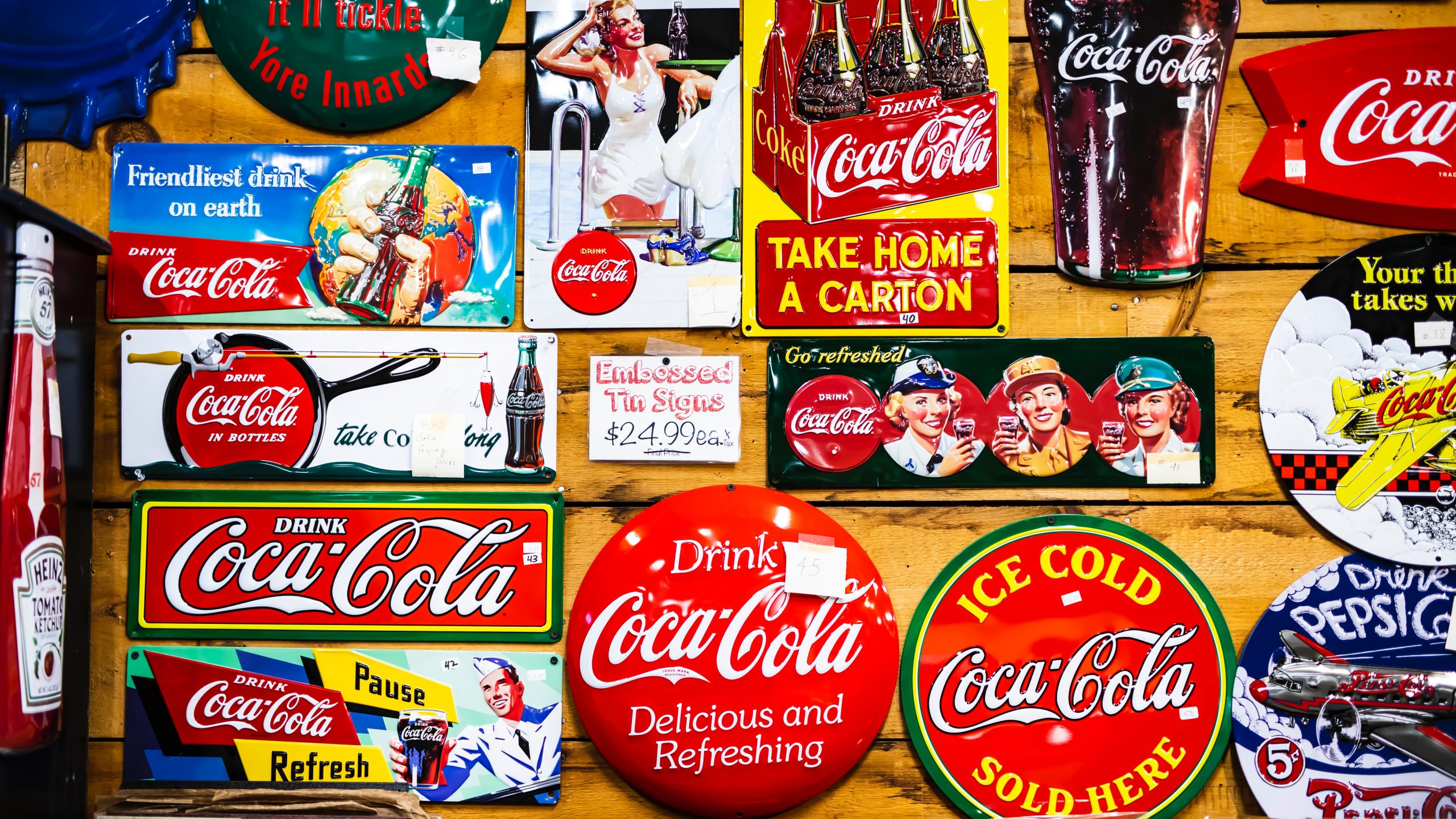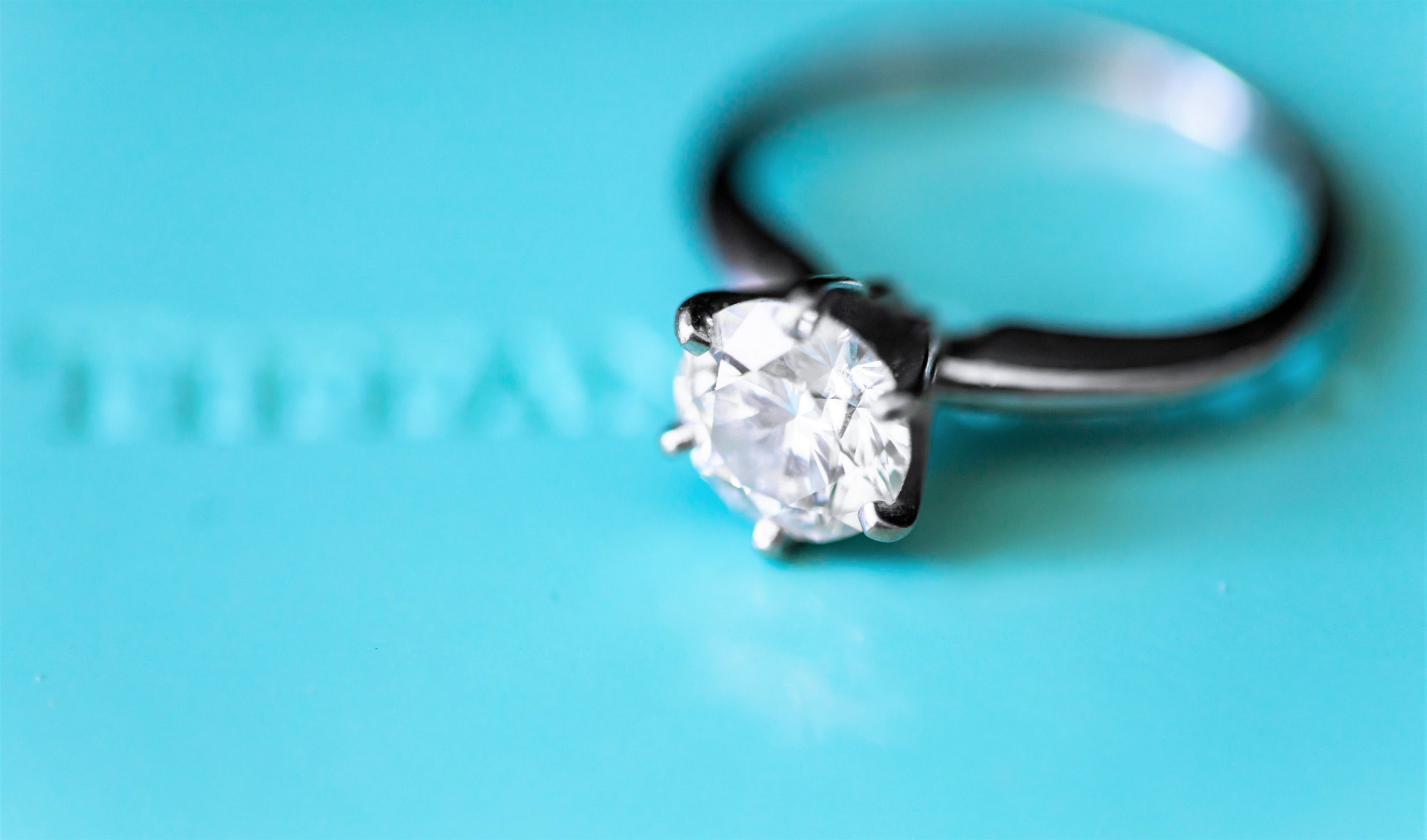22. Branding
A consists of any name, term, design, style, words, symbols or any other feature that distinguishes the goods and services of one seller from another. A brand also distinguishes one product from another in the eyes of the customer. All of its elements (i.e., logo, colour, shape, letters, images) work as a psychological trigger or stimulus that causes an association to all other thoughts we have about this brand. Jingles, celebrities, and catchphrases are also oftentimes considered brands.
The word “brand” is derived from the Old Norse ‘brand’ meaning “to burn,” which refers to the practice of producers burning their mark (or brand) onto their products. Italians are considered among the first to use brands in the form of watermarks on paper in the 1200s. However, in mass-marketing, this concept originated in the 19th century with the introduction of packaged goods.
During the Industrial Revolution, the production of many household items, such as soap, was moved from local communities to centralized factories to be mass-produced and sold to the wider market. When shipping their items, factories branded their logo or insignia on the barrels used, thereby extending the meaning of “brand” to that of trademark. This enabled the packaged goods manufacturers to communicate that their products should be trusted as much as local competitors. Campbell’s Soup, Coca-Cola, Juicy Fruit gum, Aunt Jemima, and Quaker Oats were among the first products to be “branded.”

Branding is crucial to the success of any tangible product. In consumer markets, branding can influence whether consumers will buy the product. Branding can also help in the development of a new product by facilitating the extension of a product line or mix, through building on the consumer’s perceptions of the values and character represented by the brand name.

The goal when developing a brand is to create value. You do that by emulating the characteristics and values that your customers desire. Branding is present throughout everything your organization touches—it is not just a logo. Every design shown and communication made to the consumer are examples of branding.
Branding Attributes
Brands have intrinsic and extrinsic attributes. refer to functional characteristics of the brand: its shape, performance, and physical capacity (e.g. Gillette razors shave unwanted hair and are able to do so more closely than most products in their product class because of their curved shape). Should any of these attributes be changed, they will not function in the same way or be the same product.
Examples of are features like the price of the Gillette razors, their packaging, the Gillette brand name, and mechanisms that enable consumers to form associations that give meaning to the brand. For example, it can appear more desirable because David Beckham, who is a brand himself, advertises it.
Some refer to a brand’s function as the creation and communication of a multidimensional character of a product—one that is not easily copied and damaged by competitors’ efforts.
Brands have different elements, namely brand personality (functional abilities), brand skill (its fundamental traits—e.g. Chanel No 5 is seen as sexy) and brand relationships (with buyers) or brand magic. These elements are what give the brand added value.
Marketing and advertising are about selling your products and services. Branding is about selling everything associated with your organization . The consumer perception of brands is brand knowledge: , recognition and recall, and brand image denote how consumers perceive a brand based on quality and attitudes towards it and what stays in their memory.
Successful Brand Strategies
A successful brand can create and sustain a strong, positive, and lasting impression in the mind of a consumer. Brands provide external cues to taste, design, performance, quality, value, and prestige if they are developed and managed properly. Brands convey positive or negative messages about a product, along with indicating the company or service to the consumer, which is a direct result of past advertising, promotion, and product reputation.
According to brand experts, marketers should be paying attention to the associations consumers develop in connection to a brand. are considered to be anything (e.g., sounds, smells, words, and images) that can be linked to a brand and is held in memory by consumers. Brand associations can be positive or negative depending on a consumer’s direct experiences or impressions of a brand. Low and Lamb Jr (2000) tell us that brand associations are critical for marketers because they help establish differentiation, market position, and brand strategies including product line extensions. A successful organization also recognizes that brand associations are made at each point of contact: customer service calls; greetings from a receptionist; conversations with a sales person. Each of these touch points leaves a lasting impression on a consumer and can be held in memory for a long time. For that reason, an organization’s brand strategy should consider the impact employees at all levels will have on brand associations.
Learn more about how attributes, benefits, values, culture, personality, and the user all factored into a brand strategy. The example below has been designed for automobile brand, Mercedes Benz: how might you apply a different brand to these 6 factors?
Six Levels of Meaning in a Brand Strategy
Benefits of a Brand
A brand is the personality that identifies a product, service or company (name, term, sign, symbol, design, or combination thereof); it also represents a relationship to key constituencies: customers, staff, partners, investors etc. Proper branding can yield higher product sales, and higher sales of products associated with the brand (or brand association). For example, a customer who loves Pillsbury biscuits (and trusts the brand) is more likely to try other products the company offers, such as chocolate chip cookies.
Why Be Generic When You Can Be Branded?
Some people distinguish the psychological aspect of brand associations (e.g., thoughts, feelings, perceptions, images, experiences, beliefs, attitudes, etc.) that become tied to the brand from the experiential aspect—the sum of all points of contact with the brand, otherwise known as . Brand experience is a brand’s action perceived by a person. The psychological aspect, sometimes referred to as the , is a symbolic construct created within the minds of people, consisting of all the information and expectations associated with a product, service, or company providing them .
Effective branding of a product also enables the consumer to easily identify the product because the features and benefits have been communicated effectively. This will increase the probability that the product will be accessible and therefore purchased and consumed. Dunkin’ Donuts (rebranded now as just, “Dunkin'”), for example, is a brand that has an established logo and imagery that is familiar to most consumers. The vivid colors and image of a DD cup are easily recognized and distinguished from competitors.
Branding helps create loyalty, decreases the risk of losing market share to the competition by establishing a differential advantage, and allow premium pricing that is acceptable by the consumer because of the perceived value of the brand. Good branding also allows for effective targeting and positioning. For example, Adidas is a brand known its athletic and fashionable clothing, sporting equipment, and footwear. Adidas has a global brand community due to its established global branding that communicates value.

Brand Loyalty
In marketing, refers to a consumer’s commitment to repurchase or otherwise continue using a particular brand by repeatedly buying a product or service. The American Marketing Association (“AMA”) defines brand loyalty as: “[t]he situation in which a consumer generally buys the same manufacturer-originated product or service repeatedly over time rather than buying from multiple suppliers within the category” (MBN, n.d.). This is expressed as a form of “habit-buying” where consumers purchase the same brand due to a “lack of dissatisfaction” (MBN, n.d.). Brand loyalty, however, is not just a form of habit-buying, but also the result of the relationship consumers build with a brand resulting in repeat and dedicated purchases that provide a deeper sense of personal fulfillment and satisfaction.
Aside from a consumer’s willingness or even desire to repurchase a brand, true brand loyalty exists when a consumer is committed to the brand, and when a consumer has a high relative attitude toward the brand, which is then exhibited through repurchase behaviour. For example, if Micah has brand loyalty to Company A, they will purchase Company A’s products even if Company B’s products are cheaper and/or of a higher quality.
Brand loyalty is viewed as a multidimensional construct, determined by several distinct psychological processes, such as the customers’ perceived value, brand trust, satisfaction, repeat purchase behaviour, and commitment. Commitment and repeat purchase behaviour are considered as necessary conditions for brand loyalty, followed by perceived value, satisfaction, and brand trust.
Philip Kotler (2016) defines four customer-types that exhibit similar patterns of behaviour:
- Hardcore Loyals, who buy the brand all the time;
- Split Loyals, loyal to two or three brands;
- Shifting Loyals, moving from one brand to another;
- Switchers, with no loyalty (possibly “deal-prone,” constantly looking for bargains, or “vanity prone,” looking for something different).
The benefits of brand loyalty are longer tenure (or staying a customer for longer), and lower sensitivity to price. Recent research found evidence that longer-term customers were indeed less sensitive to price increases. According to Andrew Ehrenberg, consumers buy “portfolios of brands.” They switch regularly between brands, often because they simply want a change. Thus, “brand penetration” or “brand share” reflects only a statistical chance that the majority of customers will buy that brand next time as part of a portfolio of brands. It does not guarantee that they will stay loyal.
By creating promotions and loyalty programs that encourage the consumer to take some sort of action, companies are building brand loyalty by offering more than just an advertisement. Offering incentives like big prizes creates an environment in which customers see the advertiser as more than just the advertiser. Individuals are far more likely to come back to a company that uses interesting promotions or loyalty programs than a company with a static message of “buy our brand because we’re the best.”
Branding Beyond Consumerism
Branding is a dirty word for many activists, but it really just means “the set of expectations, memories, stories, and relationships that, taken together, account for a consumer’s decision to choose one product or service over another” (Godin, 2009). If we take branding out of the realm of consumption and into the interplay of ideas in the public sphere, then we see that the tools of branding can be used for more than just selling soap.
Three important points to keep in mind about branding:
- Branding isn’t inherently “corporate.” Branding is really nothing more than a set of proven principles for associating, in the collective imagination, a certain word, phrase or image with a set of emotions or ideas. There’s nothing inherently capitalist about that. Corporations use branding because it works. Anti-corporate activists can use it, too.
- Branding can make the difference between success and failure. Every movement wants its message to be heard, but simply being right won’t sell your ideas. The human mind needs to be persuaded.
- There are copious examples of movements using branding effectively. In the ’90s, for instance, an adherence to a certain aesthetic helped unify the Otpor! youth movement that swept Serbia and ousted Slobodan Miloševic.
Whatever the context, if you craft your message for your intended audience, then that audience will want to know more. It’s as simple as engaging people in a dialogue that appeals to them. If they feel you aren’t talking to them, they’ll ignore you — or worse, work against you.
You’ll be branded whether you like it or not, so be proactive. Even conspicuously “unbranded” campaigns have a brand. Despite its efforts to avoid defining itself, the Occupy movement ended up with an effective brand when the “99%” meme organically emerged as the touchstone for people within and outside the movement.
If you decline to brand yourself, you leave an opening for other people — including enemies — to brand you instead. Operating within someone else’s frame is always more difficult than operating within a frame that you yourself have set. Think of your group’s brand as water spewing out of a hose. You can either leave the hose on the ground, or you can pick it up and direct its flow. Either way, the water continues to flow — and if you don’t pick up the hose, someone else will!
Branding is an opportunity to shape your message and ultimately use the power of that message, its meaning, and its delivery to win the war of ideas. There’s no such thing as an unbranded campaign or movement — though there are plenty of examples of poorly branded ones. Brand or be branded!
Branding doesn’t come without controversy. While some brands may prefer to “play it safe,” other brands recognize the importance of standing up for what is good and humane in the world. Nike chose to make its views and values very public when the brand aligned itself with American Civil rights Activist and football quarterback, Colin Kaepernick. Explore the branding implications of this endorsement more in the student op-ed below.
Student Op-Ed: Nike’s Endorsement of Colin Kaepernick
Nike is a brand recognized globally. The company is a cultural phenomenon and has made a big impact on sports and athletic wear. The Nike “swoosh” can be seen in every major league sport. And because of its enormous worldwide influence, being chosen to represent the brand is a call that every athlete hopes to receive.
In 2016, Colin Kaepernick, who was at the time the quarterback for the San Francisco 49ers, refused to stand for the American national anthem in protest of racial discrimination in America (Mathers, 2019). This led to many other high-profile athletes kneeling during the American national anthem, and eventually high school students began to as well.
Controversy followed Kaepernick as the NFL began to voice their disapproval of his stance. US President Donald Trump himself took to Twitter to reprimand athletes who did not want to stand during the national anthem. Kaepernick continued to protest for the rest of the season and was criticized by fans and NFL sponsors alike. Though a competent and admired player, in 2017 he was not signed to play for the following season.
In 2018, Nike signed Kaepernick to be the face of its newest, “Just Do It” campaign. This was met with significant backlash and many opposing consumers took to the internet to show videos of them defacing their Nike apparel. Despite some consumer backlash, Nike’s stocks went up 5 per cent after signing Kaepernick and their online revenue was up by 31 per cent (Kelleher, 2018).
Undoubtedly Nike took a risk by signing Kaepernick: they knew this endorsement deal with alienate a portion of their consumer market. What Nike also knew was that this decision would benefit them far more in the long-run by associating the brand with an influential public sports figure like Coin Kaepernick.
Media Attributions
Text Attributions
- The opening three paragraphs (examples; edited); the first paragraph under “Successful Brand Strategies”; the final two paragraphs under “Benefits of a Brand”; the “Six Levels of Meaning in a Brand Strategy” (edited); and, the section under “Brand Loyalty” are adapted from “Branding” by Boundless Marketing, created by Lumen Learning which is licensed under CC BY-SA.
- The fourth paragraph in the introduction and the section under “Branding Attributes” are adapted from “Developing a Brand” by Boundless.com which is licensed under CC BY-SA 4.0.
- The section under “Branding Beyond Consumerism” is adapted from Fleming, C. (n.d.). “Brand or Be Branded” by A Beautiful Trouble which is licensed under CC BY-NC-SA.
- The first two paragraphs under the section “Benefits of a Brand” and the section under “Why Be Generic When You Can Be Branded” are adapted from “The Benefits of a Good Brand” by Boundless Marketing which is licensed under CC BY-NC-SA 4.0.
- “Nike’s Endorsement of Colin Kaepernick” is by Ventura, S. (2019) which is licensed under CC BY-NC-SA.
References
Godin, S. (2009). Define: Brand. Seth Godin [Blog post]. http://sethgodin.typepad.com/seths_blog/2009/12/define-brand.html.
Kelleher, K. (2018, September 05). Nike’s Stock Fell 3% on Colin Kaepernick’s Endorsement Deal. Here’s Why Investors Will Shrug It Off. Fortune. https://fortune.com/2018/09/04/nike-stock-market-buy-sell-kaepernick-boycott/.
Kotler, P. and Keller, K.l. (2016). Marketing management. 15 [ed]. Global. Harlow. https://en.wikipedia.org/wiki/Brand_loyalty#cite_note-20.
Low, G.S. and Lamb, C.W. (2000, November). The Measurement and Dimensionality of Brand Associations. Journal of Product & Brand Management, 9(6), 350-370. https://www.researchgate.net/publication/235296718_The_Measurement_and_Dimensionality_of_Brand_Associations.
MBN: Market Business News (n.d.). Brand loyalty — definition and meaning. Market Business News. https://marketbusinessnews.com/financial-glossary/brand-loyalty/.
Mather, V. (2019, February 15). A Timeline of Colin Kaepernick vs. the N.F.L. New York Times. https://www.nytimes.com/2019/02/15/sports/nfl-colin-kaepernick-protests-timeline.html.

No Comments